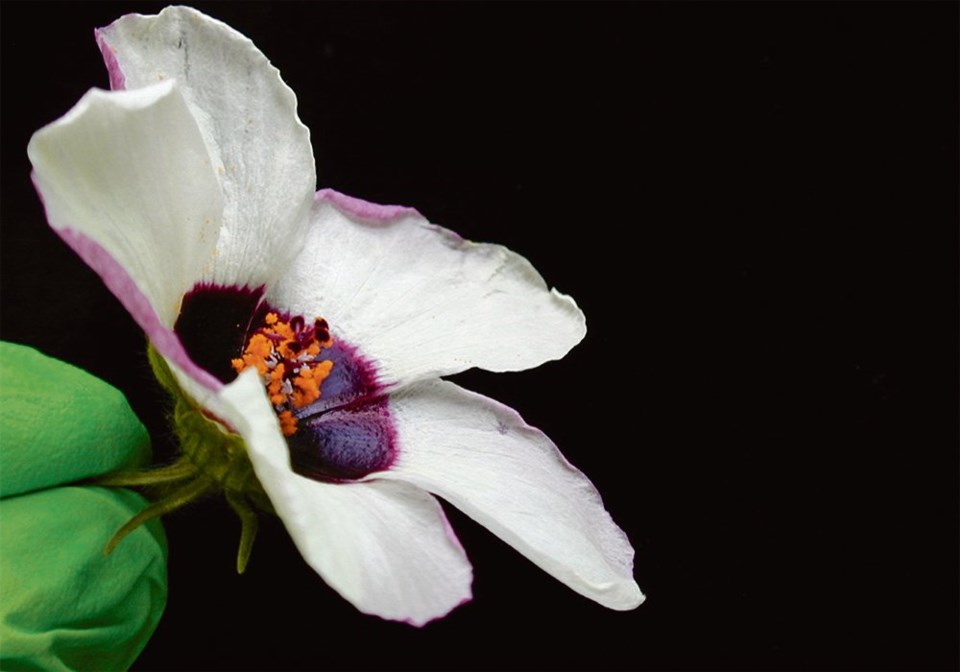Without them, a flower’s next generation of offspring doesn’t stand a chance, so they pulled a page from the construction manual and took a look at buckling.
In structural engineering, buckling is a term that could make a bad day worse. It is basically structural failure. However, research from the University of Cambridge in the United Kingdom has shown that plants use buckling to create nano-size ridges and precisely sculpture surface of petals in hibiscus flowers to generate iridescent colours as a strategy to lure pollinators.
The beauty of a flower is in its petals and both the chemical colour from pigments and the shape of the petal are among strategies that attract insects.
The buckling factor creates iridescence on certain kinds of modified surfaces in which colours appear to change depending on shifts in the angle of view or the angle of illumination.
A flower’s use of iridescence was discovered in 2009 by professor Beverly Glover and her team in the plant sciences department at Cambridge. But exactly how the plant uses buckling to develop the ridges and create the phenomenon was not known until recently.
When petals start to grow their cells are initially relatively flat and topped with a smooth cuticle.
“The petal striations on hibiscus flowers develop during petal growth, and professor Beverley Glover’s team, who were the first to discover the iridescence properties in flowers, suspected that they may be caused by mechanical properties as the petals expanded,” said Sarah Robinson in the University of Cambridge’s Sainsbury laboratory and lead researcher of the current study.
On hibiscus flowers, iridescence is created by an intricate pattern of nano-size ridges on each petal’s surface. These ridges cause light to bend around them, creating iridescence similar to that seen on soap bubbles, feathers and butterfly wings.
Anything nano-sized is immensely small. Wavelengths of optical light have units of nanometres (nm) and one nanometer is equal to one billionth of a metre. Robinson said the wavelengths of the ridges are usually between 400 and 1,000 nm.
To understand the mechanical properties in plants and their striation patterns, Robinson developed a robotic system and worked with members of Glover’s team. Called the Automated Confocal Micro-Extensometer (ACME), the robotic system could apply a specific force to stretch immature hibiscus petals that had not yet developed striations to see if it was possible to mechanically induce the patterns.
“ACME is a system that I built which has two platforms that we attach the petal to,” said Robinson. “We then move the platforms apart to stretch the petal. One platform is attached to a load cell, which measures the force we are applying. While we apply the stretching, we image the petal to see when it buckles. It is only the purple part on the inside of the flower which forms the striations.”
They applied the mechanical stress to test petals at the early stage of growth when they were nine to 10 millimetres in length and prior to any striation formation. Once stressed, they could see that the striations appeared almost instantly.
“One of the big surprises was that we could also induce striations at 90 degrees to the striations that naturally occur, which indicates that the orientation of the striations is not pre-patterned,” said Robinson.
“However, we could not induce striations in other parts of the petals, suggesting that the ability to form striations is under genetic control. The buckling occurs in the cuticle, which is made up of different layers. The cuticle sits on top of the cells in the epidermis. The formation of striations depends on the properties of these layers.”
The buckling theory allowed the researchers to illustrate why some cuticles wrinkle and others do not. The research is further investigating the development of hibiscus petal striations through mathematical modelling and the measurements of the physical properties of the actual layers.
Robinson said the material that buckles is deposited while the petals grow. In normal development, the ridges form toward the end of the growth of the petal a couple of days before the flower opens.
The ridges’ structure might also contribute to insect grip and decrease the wettability of the tissues.
In the report, Robinson wrote that cuticular striations play a range of roles and that the cuticle behaves like a bilayer system with a stiff film on a compliant substrate. The actual pattern of the buckling aligns with the direction of the stress to create a larger-scale pattern.
Patterning and its combination with microstructures and nanostructures sculpt the outermost layer of petals, giving them unique physical, mechanical or optical properties.
Given that an estimated 35 percent of the world’s crops rely on pollinators — bees, wasps, beetles, hoverflies and butterflies — and that some are in decline, it is important to understand how the relationship and the signaling work between plants and insects.
The research by Robinson and her team was published recently in Cell Reports.




